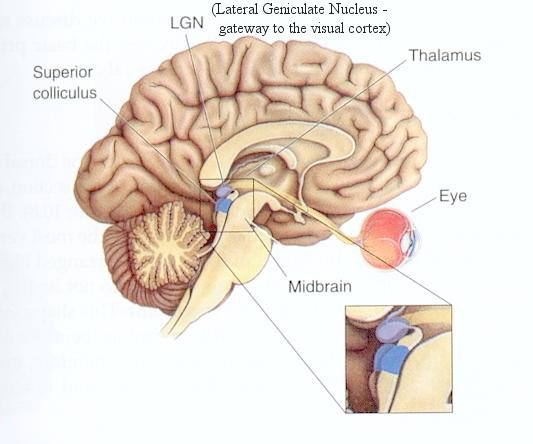Superior colliculus
From Psy3242
(→'''Damage to the superior colliculus''') |
|||
| Line 17: | Line 17: | ||
If the superior colliculus is damaged, the express saccades (jerking eye movement) are disturbed, but slower, smoother eye movements remain unharmed. One disorder affecting the superior colliculi is referred to as '''supra nuclear palsy''', in which patients seem blind due to the lack of ability to focus normally. This is also referred to as a person loosing their "visual grasp." | If the superior colliculus is damaged, the express saccades (jerking eye movement) are disturbed, but slower, smoother eye movements remain unharmed. One disorder affecting the superior colliculi is referred to as '''supra nuclear palsy''', in which patients seem blind due to the lack of ability to focus normally. This is also referred to as a person loosing their "visual grasp." | ||
| + | |||
| + | Here is another picture of the superior colliculus: | ||
| + | http://www.enhg.org/resources/articles/morphine/slide04.jpg | ||
Revision as of 04:52, 28 April 2008
Superior colliculus
Located on the dorsal side of the brain stem within the midbrain, the superior colliculi are involved in controlling eye movements. These eye movements allow for the eyes to be drawn to objects in the peripheral field of vision, therefore aiding in visual attention. More specifically, these eye movements that are controlled by this part of the brain are referred to as express saccades. Express saccades occurs when the eyes move quickly from the previous area of focus to a new one in a jerking motion.
Damage to the superior colliculus
If the superior colliculus is damaged, the express saccades (jerking eye movement) are disturbed, but slower, smoother eye movements remain unharmed. One disorder affecting the superior colliculi is referred to as supra nuclear palsy, in which patients seem blind due to the lack of ability to focus normally. This is also referred to as a person loosing their "visual grasp."
Here is another picture of the superior colliculus:


